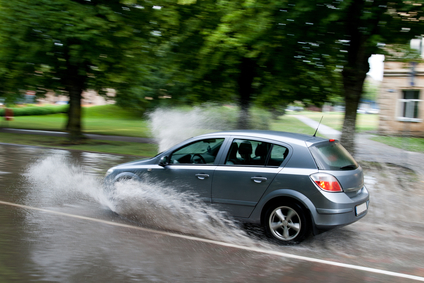In the good weather many drivers think that they don’t need to replace winter tires on their vehicles and that it’s okay to keep using them. Mostly the reason is that it’s costly to buy a summer tire or that they would only use the car every now and then in the summer or simply because they believe that the tires aren’t worn yet so it’s okay to leave them on.
However, this can be very dangerous.
If the temperature is about/above 30 degrees constantly, the rubber becomes very weak, because it is not designed to cope with the summer heat. The main problem with winter tires is that the material is much softer than on the summer tires and therefore it’s less stable on dry roads.
The treading on the tires is significatly different as well. Winter tires are ribbed, lamellar so they able to stick to the road well in the snow (the blades also results increased road noise). The summer tires have longitudinal rubber surface, curving toward the sides. The furrows lead the water away easily and move more better on flat asphalt.

Winter tires wear out faster on warm days and make your car run out of fuel earlier as well. It’s not only tire pressure that affects the fuel consumption, but the treading and the material of the tires as well. The pattern of winter tires increase the rolling resistance, leading to greater consumption.
Breaking distance is also longer on cars equipped with winter tires compared to summer tires. It’s harder to manouver the car in narrow bends and on wet roads too. In short, the higher the temperature the harder it is to control the car when we leave winter tires on for the summer.
So why we should not use winter tires in summer:
- because we have to count with greater braking distances
- because the tires wear out faster
- because other parts of the car can damage (ie. undercarriage)
- because the consumption of the car will be (much) greater
- because it is difficult to control the car on wet roads and therefore it’s dangerous
Summer tires – choose appropriate varieties
In the summer there are frequent torrential rains, thunderstorms – these are the situations where we really see if we picked the right summer tire for our car.
No matter if we buy new ones or take the old ones out of the garage, what matters is the tread depth: the recommended depth is 3-4 mm.
Alternatively, we can use all-season tires, but this is not really recommended – in the case of critical temperatures (heat wave , heavy snow / cold), they often abandon the drivers, especially on long journeys.

